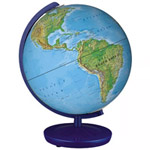Global Integrative Studies, School of
Date of this Version
2016
Document Type
Article
Citation
The Holocene (2016) 26(8): 1,237-1,247. doi: 10.1177/0959683616638418
Abstract
Contemporary climate dynamics of the circum-Caribbean Region are characterized by significant precipitation variability on interannual and interdecadal timescales controlled primarily by El Niño Southern Oscillation (ENSO) and the Atlantic Multidecadal Oscillation (AMO). However, our understanding of pre-industrial climate variability in the region is hampered by the sparse geographic distribution of paleoclimate archives. Here, we present a high-resolution reconstruction of effective precipitation for Barbuda since the mid-16th Century, based on biostratigraphic and stable isotope analyses of fossil ostracods and gastropods recovered from lake sediment cores from Freshwater Pond, the only freshwater lake on the island. We interpret episodic fluctuations in shell accumulation in the sediment record to represent changes in the balance between precipitation and evaporation during the Little Ice Age (LIA ~1400–1850 CE) and Industrial (1850–present) periods. Comparisons between indices of reconstructed ENSO and AMO variability, the abundance of the freshwater gastropod Pyrgophorus parvulus, and the δ18O records from ostracod calcite suggest that the relative influence of ENSO and AMO on long-term rainfall patterns in Barbuda has changed over the last 400 years. Our findings are in agreement with other high-resolution paleoclimate studies that suggest that long-term changes in effective precipitation during the LIA were much more variable, temporally and spatially, than previously suggested.
Included in
Biodiversity Commons, Biological and Physical Anthropology Commons, Geography Commons, International and Area Studies Commons


Comments
Copyright 2016, Sage. Used by permission.